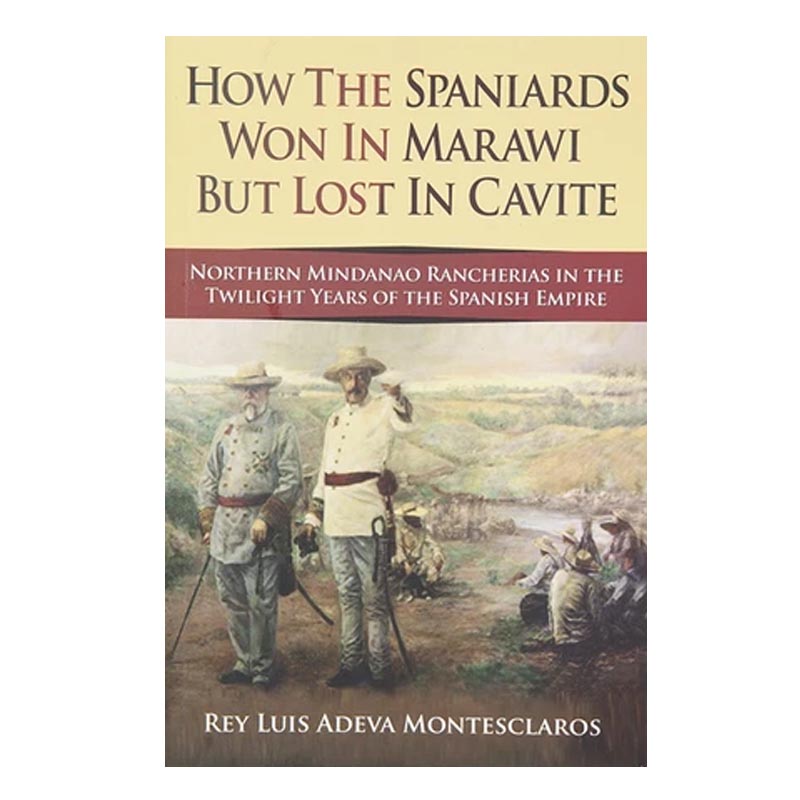There is a Chinese saying, “Kaijuan youyi (開卷有益).” It means reading is always profitable. Another, “Shali taojin (沙裡淘金),” means there are gold grains to be found in sand or the essential from a large mass of materials.
The two sayings have long been our motto in our research on the Chinese in the Philippines.
To illustrate, we recently acquired How the Spaniards Won in Marawi but Lost in Cavite by Rey Luis Adeva Monteclaros and published by New Day Publishers last year.
Its subtitle is “Northern Mindanao Rancherias in the Twilight Years of the Spanish Empire.” Neither title nor subtitle suggested that within its covers the book had a lot of material on the Chinese in the Philippines. Some of the accounts were very interesting and even shocking; many are little known.
The following account is about Misamis province in the mid-1800s:
“The most promising region of Mindanao in the second half of the 19th century is Provincia de Misamis… Another indicator, considered as a sign of intensive economic activity, is the growing presence of Chinese immigrants who totaled 770 in 1895.”
“Cagayan de Misamis (later renamed Cagayan de Oro), as the capital, grew at a remarkable rate in the 19th century, as shown by the numerous Chinese traders who had established themselves there.”
Monteclaros also wrote about a solution for crossing the Agus River.
“Being the only possible solution to cross the wide and swift Agus River, the construction of a bridge became the project of the major of the Engineer, Raphael Ravena,” he wrote. “The work of the road and preparation for the construction of the bridge progressed sufficiently, with the necessary materials being transported to Fort Salazar before it finally arrived at Pahuac, receiving the draftees, reinforcing the bridge with some of the forces from Manila, which included two brigades of Filipino and Chinese porters and others from the presido, ordered also from Manila.”
This reference to laborers debunks the general belief that the early Chinese in the Philippines were merchants and artisans.
“Due to the eagerness of Governor-General Blanco and General Rios, the project was started without the actual plans being completed. Thus, the first two of three kilometers from Iligan was started with 1,000 Chinese contracted from Manila, aside from the work columns described above.
“…With the intention of not having to build a costly bridge over the Iligan River, it was decided to construct the train station on the left bank of the said river and enclose it with a wall where inside would be the living quarter of the Chinese, office and storehouse for the materials and garrisoned by two company.”
Some of the Chinese laborers were imported, as the account below shows.
“The work of assembling and arming the vessels was directed by Spanish naval engineers and from Hong Kong, the manufacturing company sent two English mechanics and 100 Chinese workers.”
Monteclaros also related incidents on the attacks of the Moros and Disciplinarios (conscripts consisting mostly of convicts from Luzon who were pressed into battle against the Moros in Lanao).
“The inhabitants of Iligan had been known for their reputation as having repulsed many Moro attacks, including that attack in 1754, when it was besieged for one month and survived the small population was formed by the Filipino inhabitants and some Chinese,” he wrote.
“They [Disciplinarios] passed through the towns of Manicao, Naawan, Initao, Alubijid, El Salvador, Malugan and Opo, where they ransacked the houses, especially the houses of the Spaniards; the churches and conventos, and the stores of the Chinese.
“They [Disciplinarios] instead began to distribute the clothes that they had taken from the Chinese traders earlier.
“On Nov. 18, 1896, Sunday, around 8 p.m., the gobernadorcillo of Gingoog sounded the alarm. He was terrified because 100 Disciplinarios with 40 Bukidnons and 10 Moros had swooped down on Odiungan, a barrio just an hour away from Gingoog. The raiders were looting the place. They killed a Bisaya and two Chinese whose livers were then eaten by one who appeared to be one of their leaders, a bearded Bukidnon.
“The Bukidnons, aside from ransacking the Chinese stores, took all their books and notebooks of accounts and burned them so that the Chinese could no longer charge them for their debts. The material loss was estimated to be from P18,000 to P20,000.”
In an incident “near the Larapan River on Sept. 5, the forces of Lazaro de Elizavera were able to corner two Moro vessels. They were forced to go ashore and thus, fell into the hands of the Boholanos who were waiting for them. All the Moros were slaughtered, and the two Chinese who fought with them.”
From the accounts above, one realizes the various roles of the Chinese in Misamis. While the Chinese then were an indicator of economic development there, they also participated in bridge and road construction.
Imagine, 1,000 Chinese contracted to build the first two to three kilometers from Iligan. This is such an important information little or never known before. It indicates that Chinese in the Philippines were not only traders or merchants.
Categories
Chinese in Provincia de Misamis
